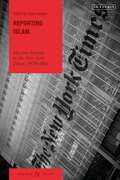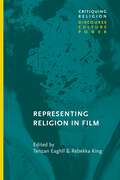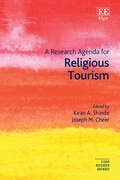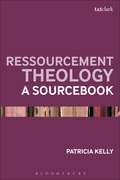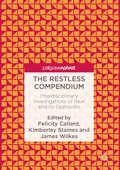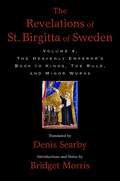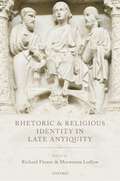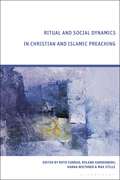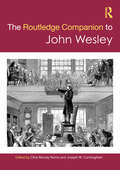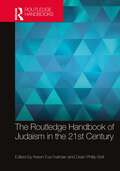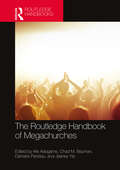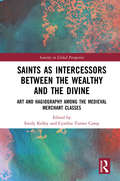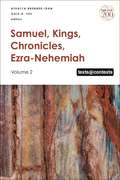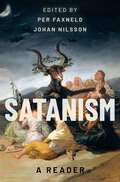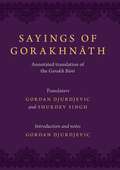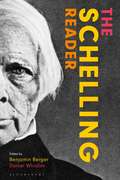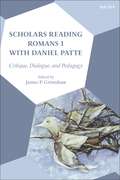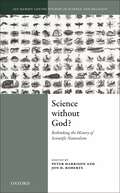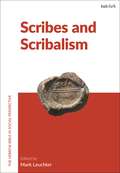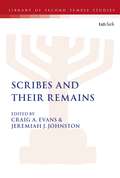- Table View
- List View
Reporting Islam: Muslim Women in the New York Times, 1979-2011 (Gender and Islam)
Reporting Islam examines the coverage of Muslim women in the New York Times from 1979-2011. The analysis addresses the nature of the coverage; whether there are parallels in the depiction of Muslim women from the Middle East and South Asia and with the US government policies toward these countries; and the relationship between feminism in the US and the representation of Muslim women in the US. At a time when women often become the iconic representatives of their nations, their cultures and their religions, this book offers unique insight into how a dramatic period of contemporary history for the Middle East and South Asia was depicted by the leading print newspaper in the world. The coverage captures the Islamic Revolution in Iran, the rise of Islamist movements across the Middle East, South Asia, and Africa, the first Gulf War, the 9/11 events, the second Gulf War, the War on Terror, and the Arab uprisings. The book asks critical questions about the wider implications of the misrepresentation of Muslim women in the media, and the links between print news, US foreign policy and women.
Representing Religion in Film (Critiquing Religion: Discourse, Culture, Power)
This is the first full-length exploration of the relationship between religion, film, and ideology. It shows how religion is imagined, constructed, and interpreted in film and film criticism. The films analyzed include The Last Jedi, Terminator, Cloud Atlas, Darjeeling Limited, Hellboy, The Revenant, Religulous, and The Secret of my Success. Each chapter offers: - an explanation of the particular representation of religion that appears in film - a discussion of how this representation has been interpreted in film criticism and religious studies scholarship - an in-depth study of a Hollywood or popular film to highlight the rhetorical, social, and political functions this representation accomplishes on the silver screen - a discussion about how such analysis might be applied to other films of a similar genre Written in an accessible style, and focusing on Hollywood and popular cinema, this book will be of interest to both movie lovers and experts alike.
A Research Agenda for Religious Tourism (Elgar Research Agendas)
Elgar Research Agendas outline the future of research in a given area. Leading scholars are given the space to explore their subject in provocative ways, and map out the potential directions of travel. They are relevant but also visionary.Incisive and interdisciplinary, this Research Agenda broaches topics that have been under-researched within religious tourism, including: place attachment and marketing; memory and modification of sacred landscapes for tourism needs; the darker sides of religious tourism; multi-stakeholder governance; mission-trips; and allied forms of tourism.With contributions from top scholars, the book includes cases from across Europe and Asia, exploring pilgrimage sacred landscapes for different religions. Building on emerging themes including the importance of governance, conflicts associated with pilgrimage and religious tourism, gender and gendered dimensions, resilience in the wake of the recent pandemic, and newer ways of performing religious tourism such as virtual reality, it sets a research agenda for future inquiry.This thought-provoking Research Agenda will be a valuable resource for scholars of tourism, human geography, heritage studies, anthropology, and religious studies.
Ressourcement Theology: A Sourcebook
Ressourcement Theology: A Sourcebook offers a collection of texts previously unavailable in English from leading Dominicans and Jesuits, who initiated a movement for renewal that contributed to the reforms of the Second Vatican Council. In the last decade, theologians have undertaken a serious reappraisal of the contribution of Ressourcement theology to 20th century theology in the Catholic tradition and beyond. This 'return to Ressourcement' has resulted in many of the principal texts being translated into English and (re-)issued, ensuring their accessibility to scholars across the globe. Despite this, many of the earliest documents relating to the history of Ressourcement theology are unavailable to most English-speaking scholars, as they are largely journal articles and book chapters published in French.Patricia Kelly has selected the most significant texts that so far have been unavailable in English, including the controversial piece by Jean-Marie LeBlond ('The Analogy of Truth') that was condemned in the 1950s by the Vatican, as well as the response to Labourdette's attack on LeBlond, penned anonymously by a group of Jesuits. All of these documents will help students and scholars to engage deeply with the history of the Ressourcement movement and its relevance for the developments of the Catholic tradition.
The Restless Compendium: Interdisciplinary Investigations of Rest and Its Opposites
This book is open access under a CC BY license.This interdisciplinary book contains 22 essays and interventions on rest and restlessness, silence and noise, relaxation and work. It draws together approaches from artists, literary scholars, psychologists, activists, historians, geographers and sociologists who challenge assumptions about how rest operates across mind, bodies, and practices. Rest’s presence or absence affects everyone. Nevertheless, defining rest is problematic: both its meaning and what it feels like are affected by many socio-political, economic and cultural factors. The authors open up unexplored corners and experimental pathways into this complex topic, with contributions ranging from investigations of daydreaming and mindwandering, through histories of therapeutic relaxation and laziness, and creative-critical pieces on lullabies and the Sabbath, to experimental methods to measure aircraft noise and track somatic vigilance in urban space. The essays are grouped by scale of enquiry, into mind, body and practice, allowing readers to draw new connections across apparently distinct phenomena. The book will be of interest to students and scholars across a range of disciplines in the social sciences, life sciences, arts and humanities.
Rethinking European Jewish History (The Littman Library of Jewish Civilization)
National Jewish Book Awards Winner of the Anthologies and Collections Award, 2009.Europe has changed greatly in the last century. Political, social, and ideological transformations have not only redrawn the map of the continent but have rewoven the fabric of its culture. These changes have nourished widespread reassessment in European historical research: in terms of its presuppositions, its methodologies, its directions, its emphases, and its scope. The political boundaries between nations and states, along with the very concepts of 'nation' and 'boundary', have changed significantly, and the self-consciousness of ethnic minorities has likewise evolved in new directions. All these developments have affected how the Jews of Europe perceive themselves, and they help to shape the prism through which historians view the Jewish past. This volume looks at the Jewish past in the spirit of this reassessment. Part I reconsiders the basic parameters of the subject as well as some of its fundamental concepts, suggesting new assumptions and perspectives from which to conduct future studies of European Jewish history. Topics covered here include periodization and the definition of geographical borders, antisemitism, gender and the history of Jewish women, and notions of assimilation. Part II is devoted to articulating the meaning of 'modernity' in the history of European Jewry and demarcating key stages in its crystallization. Contributors here reflect on the defining characteristics of a distinct early modern period in European Jewish history, the Reformation and the Jews, and the fundamental features of the Jewish experience in modern times. Parts III and IV present two scholarly conversations as case studies for the application of the critical and programmatic categories considered thus far: the complex web of relationships between Jews, Christians, and Jewish converts to Christianity (Conversos, New Christians, Marranos) in fifteenth-century Spain; and the impact of American Jewry on Jewish life in Europe in the twentieth century, at a time when the dominant trend was one of migration from Europe to the Americas. This timely volume suggests a new framework for the study of Jewish history and helps to contextualize it within the mainstream of historical scholarship.CONTRIBUTORS: Ram Ben-Shalom, Miriam Bodian, Jeremy Cohen, Judah M. Cohen, David Engel, Gershon David Hundert, Paula Hyman, Maud Mandel, David Nirenberg, Moshe Rosman, David B. Ruderman, Daniel Soyer
The Revelations of St. Birgitta of Sweden, Volume 4: The Heavenly Emperor's Book to Kings, The Rule, and Minor Works
St. Birgitta of Sweden (1303-1373, canonized 1391) was one of the most charismatic and influential female visionaries of the later Middle Ages. Altogether, she received some 700 revelations, dealing with subjects ranging from meditations on the human condition, domestic affairs in Sweden, and ecclesiastical matters in Rome, to revelations in praise of the Incarnation and devotion to the Virgin. Her Revelations, collected and ordered by her confessors, circulated widely throughout Europe and long after her death. Many eminent individuals, including Cardinal Juan Torquemada, Jean Gerson, and Martin Luther, read and commented on her writings, which influenced the spiritual lives of countless individuals. Birgitta was also the founder of a new monastic order, which still exists today. She is the patron saint of Sweden, and in 2000 was declared (with Catherine of Siena and Edith Stein) co-patroness of Europe. Birgitta's Revelations present her as a commanding and dauntless visionary who develops a contemplative mysticism that is always interwoven with social engagement and a commitment to the salvation of the world. The varied styles of her revelations are dominated by frequent juxtapositions of memorable images and allegories that illustrate her fierce and fertile imagination, her sharp powers of observation and understanding, and her passionate and receptive storytelling powers. This fourth and final volume of the translation of the Revelations of St. Birgitta of Sweden, comprises The Heavenly Emperor's Book to Kings, The Rule, and Minor Works. While the complete collection of Birgitta's books--called Liber caelestis--ends with Books VII, the eighth book, also referred to as The Heavenly Emperor's Book to Kings, was added after her death. It was compiled by Alfonso of Jaén, and is prefaced by his own treatise, titled The Hermit's Letter to Kings, which examines the ways in which revelations are tested and proven to be true visions conferred by the Holy Spirit. This volume also contains the Birgittine Rule, the Matins readings intended for the nuns, four prayers, and a collection of scattered revelations that lie on the periphery of the main corpus of texts. The translation is based on the recently completed critical edition of the Latin text and promises to be the standard English translation of the Revelations for years to come.
Revisioning Ritual: Jewish Traditions in Transition (Jewish Cultural Studies #v. 3)
Often overlooked as routine or even dismissed as odd customs, ritual in its many guises demands attention as a central strategy for embodying experience. Like other groups, Jews rely on ritual to provide an inventory of social meanings and a context for negotiating the challenges of everyday life. Ritual for Jews has historically carried special meanings for conveying what is Jewish about Jewishness. It is not enough, however, simply to document customs: for a full understanding of ritual and its meaning for participants we need to analyse how ritual expressions such as liturgies, holidays, life-cycle events - even political rallies - change in response to developments in the wider society, or are adapted to meet new needs. The innovative studies of adapted, invented, and evolving rituals presented in this volume, that include the Tunisian Jewish celebration of Se'udat Yitro, liturgical prayers for Israel Independence Day, shiva observance in an old-age home, transplanted Ethiopian Jewish wedding events, and same-sex marriage rituals. thus interpret the Jewish enactment of ritual and uses of tradition in everyday life against the background of modernity and community. It is the complexities of ritual - the dynamics of negotiating the religious and the secular, the traditional and the modern, the social and the political, performance and practice - that form the core of the book. Together, the contributors show ritual action to be key to the maintenance of Jewish identity and to the expression of a distinctive world-view.
Rhetoric and Religious Identity in Late Antiquity
The topic of religious identity in late antiquity is highly contentious. How did individuals and groups come to ascribe identities based on what would now be known as 'religion', categorizing themselves and others with regard to Judaism, Manichaeism, traditional Greek and Roman practices, and numerous competing conceptions of Christianity? How and why did examples of self-identification become established, activated, or transformed in response to circumstances? To what extent do labels (whether ancient and modern) for religious categories reflect a sense of a unified and enduring social or group identity for those included within them? How does religious identity relate to other forms of ancient identity politics (for example, ethnic discourse concerning 'barbarians')? Rhetoric and Religious Identity in Late Antiquity responds to the recent upsurge of interest in this issue by developing interdisciplinary research between classics, ancient and medieval history, philosophy, religion, patristics, and Byzantine studies, expanding the range of evidence standardly used to explore these questions. In exploring the malleability and potential overlapping of religious identities in late antiquity, as well as their variable expressions in response to different public and private contexts, it challenges some prominent scholarly paradigms. In particular, rhetoric and religious identity are here brought together and simultaneously interrogated to provide mutual illumination: in what way does a better understanding of rhetoric (its rules, forms, practices) enrich our understanding of the expression of late-antique religious identity? How does an understanding of how religious identity was ascribed, constructed, and contested provide us with a new perspective on rhetoric at work in late antiquity?
Rites, Rituals & Religions: Amerindian, Spanish, Latin American & Latino Worlds
Philosophers have contemplated the meaning of life, the who & the why, since nascent self-consciousness of the evolving hominid species. Yet practical efforts, i.e., control of life, have always transcended the philosophical: how to dominate what happens to the physical body itself, how to control the environment, and the interaction therefrom. Thus are born rites, rituals & religions. A rite can be a prescribed religious or other solemn ceremony or act it can be a social custom or practice, or even a mundane conventional act. A ritual can be the established form for a ceremony, the order of words used for example; a ritual observance can be either a system of ceremonial acts or actions, or an act or series of acts regularly repeated in a set precise manner. Religion generally encompasses a socio-cultural system of designated behaviors and practices, morals, beliefs, worldviews, texts, sanctified places, prophecies, ethics, or organizations, that relates humanity to supernatural, transcendental, and spiritual elements. Religion is a set of beliefs, especially when considered as the creation of a superhuman agency or agencies, usually involving devotional and ritual observances (rites and rituals). Control efforts highlighted in this volume range from prehistoric cave paintings, Amerindian ceremonies, Christian denominational (especially Roman Catholic), traditions & Afro-Caribbean syncretic rites, to crossovers, which deal with the more socio-cultural rites of passage like the quinceanera, and/or dance rites & rituals like the Southern Cone tango, African candombe, Cuban habanera and European waltzes and polkas and the corrida, from the public ritual known as tauromaquia. The premise behind this comparative volume is to discover how rites, rituals & religions are addressed in real life in these divergent societies by exploring the visual and literary representations of control. Rites, Rituals and Religions is eighth and final volume in the Hispanic Worlds series
Ritual and Social Dynamics in Christian and Islamic Preaching
Christian and Islamic sermons from past and present, and their preachers, are analyzed to reveal the socio-cultural dynamics of religious speeches.Part I focuses on the explicit contribution of sermons in socio-cultural transformation processes. It shows how sermons connect with holy texts, religious norms of the specific group, and social-cultural contexts.Part II analyzes the dynamic tension between normativity and popularity. Rather than juxtaposing normative stances and the popularity of sermons, it shows how that normativity can itself contribute to popularity and the quest of popularity carries its own normative stances.Part III explores the ritual embeddedness of religious speech in the sermon in relation to social dynamics, normativity, and popularity, and shows how speech and rituals have a reciprocal relationship.
The route of the Exodus (Large Print)
This image shows a map of the ancient Middle East. There is a locator dot shown, which will be at the top left when the image is the correct way up. The map is surrounded by an image border. There is a small key and a scale in the bottom left corner. The Mediterranean Sea is in the top left of the page. The Red Sea is in bottom centre of the page. The Dead Sea is in the top right of the page. The land is not textured. As it is today, Egypt fills the left of the page. Modern day Israel is in the top right of the page. The route taken is shown as a dashed line and the direction indicated by arrows. Towns on the route are marked by triangles.
The Routledge Companion to John Wesley (Routledge Religion Companions)
The Routledge Companion to John Wesley provides an overview of the work and ideas of one of the principal founders of Methodism, John Wesley (1703-91). Wesley remains highly influential, especially within the worldwide Methodist movement of some eighty million people. As a preacher and religious reformer his efforts led to the rise of a global Protestant movement, but the wide-ranging topics addressed in his writings also suggest a mind steeped in the intellectual developments of the North Atlantic, early modern world. His numerous publications cover not only theology but ethics, history, aesthetics, politics, human rights, health and wellbeing, cosmology and ecology. This volume places Wesley within his eighteenth-century context, analyzes his contribution to thought across his multiple interests, and assesses his continuing relevance today. It contains essays by an international team of scholars, drawn from within the Methodist tradition and beyond. This is a valuable reference particularly for scholars of Methodist Studies, theology, church history and religious history.
The Routledge Handbook of Judaism in the 21st Century (Routledge Handbooks in Religion)
The Routledge Handbook of Judaism in the 21st Century is a cutting-edge volume that addresses central questions and issues animating Judaism, Jewish identity, and Jewish society in a global, integrated, and forward-looking way. It introduces readers to the complexity of Judaism as it has developed and continues to develop throughout the 21st century through the prism of three contemporary sets of issues: identities and geographies; structures and power; and knowledge and performances. Within these sections, international contributors examine central issues, topics, and debates, including: individual and collective identity; globalization and localization; Jewish demography; diversity, denominations, and pluralism; interreligious relations; political orientations; community organization; family and gender; the Bible and Talmud today; Jewish philosophy and authority in Jewish thought; digital Judaism; antisemitism; Jewish spirituality and rituals; memory; language; religious education; material culture, literature, music, and art; approaches to the environment; and contemporary Zionism and Israel. The handbook also includes an extensive bibliography to help orient readers to the most important and leading work in the field. The Routledge Handbook of Judaism in the 21st Century is essential reading for students and researchers in religious studies and Jewish studies. It will also be useful for those in related fields, such as cultural studies, literature, sociology, anthropology, and history, as well as Jewish professionals and lay leaders.
The Routledge Handbook of Megachurches (Routledge Handbooks in Religion)
The Routledge Handbook of Megachurches provides a survey of global megachurch phenomena, with an international slate of authors introducing existing and emerging research on a wide variety of relevant topics.Over the past decade, the field of megachurch studies has matured and become global in its scope and orientation. The Handbook offers 33 chapters by top scholars in the field, focusing in particular on: The location, demographic nature, and transnational connections of megachurches. Megachurch worship, hermeneutics, and theology (in theory and practice). Megachurch institutional dynamics. The various ways that megachurches have both influenced and been influenced by their social contexts in terms of class, age, gender, sexuality, and pop culture. The Handbook's interdisciplinary orientation makes it essential reading for sociologists, political scientists, anthropologists, media specialists, pop culture observers, business strategists, leadership consultants, marketing analysts, scholars of religion, and Christian historians, theologians, and missiologists. Experienced scholars of megachurches will gain valuable insight into aspects of megachurch research beyond their own specializations. Scholars new to the field will find the chapters useful as signposts for where to begin their own academic exploration. Christian pastors and laypeople will learn more about this increasingly prominent and influential form of their faith.
Saints as Intercessors between the Wealthy and the Divine: Art and Hagiography among the Medieval Merchant Classes (Sanctity in Global Perspective)
Offering snapshots of mercantile devotion to saints in different regions, this volume is the first to ask explicitly how merchants invoked saints, and why. Despite medieval and modern stereotypes of merchants as godless and avaricious, medieval traders were highly devout – and rightly so. Overseas trade was dangerous, and merchants’ commercial activities were seen as jeopardizing their souls. Merchants turned to saints for protection and succor, identifying those most likely to preserve their goods, families, reputations, and souls. The essays in this collection, written from diverse angles, range across later medieval western Europe, from Spain to Italy to England and the Hanseatic League. They offer a multi-disciplinary examination of the ways that medieval merchants, from petty traders to influential overseas wholesalers, deployed the cults of saints. Three primary themes are addressed: danger, community, and the unity of spiritual and cultural capital. Each of these themes allows the international panel of contributors to demonstrate the significant role of saints in mercantile life. This book is unique in its exploration of saints and commerce, shedding light on the everyday role religion played in medieval life. As such, it will be of keen interest to scholars of religious history, medieval history, art history, and literature.
Samuel, Kings, Chronicles, Ezra-Nehemiah: Volume 2 (Texts @ Contexts)
This volume brings together disparate views about biblical texts in the books of Samuel, Chronicles and Ezra-Nehemiah and examines their influence in the life of contemporary communities, demonstrating how today's environments and disorders help readers to acquire new insights into such texts.The contributing scholars hail from different continents - from East Asia to the United States to Europe to South Africa and Israel - and count themselves as members of various Jewish and Christian traditions or secularist ways of life. But, in spite of their differences in location and community membership, and perhaps in the spirit of the times (2020 and its global discontents), they share preoccupations with questions of ethics in politics and life, 'proper' death, violence and social exclusion or inclusion. This volume offers readers a better understanding of how politics and faith can be melded, both in ancient and contemporary contexts, to serve the interests of certain classes and societies, often at the expense of others.
Satanism: A Reader
Satanism is a current of thought that generates intense feelings. It remains understudied by academics. This selection of key source texts from the period 1841 to 2017 attempts to remedy that gap. Ranging from the esoteric to the anti-clerical, countercultural, and political, the texts span a wide variety of genres, from poetry and polemical religious tracts to ritual instructions and internet FAQ's. All are provided with comprehensive introductions, written by specialists in the field, that offer readers both critical historical context and expert scholarly interpretation. Chronologically structured, the book can be read as a succinct historical overview of the development of Satanism, with the immediacy that only primary sources can provide. It is ideal for both classroom and research use, as well as a fascinating read for anyone with an interest in the occult, the transgressive, secularization, and the fringes of the religious landscape.
Sayings of Gorakhnath: Annotated Translation of the Gorakh Bani
Sayings of Gorakhnath presents a translation of late-medieval texts in Old Hindi, traditionally attributed to one of the founders of the Order of Nath Yogis. The Naths are associated with the creation and development of hatha yoga, with important historical and ideological links to Hindu tantra and alchemy. The texts gathered in this collection on the one hand provide a criticism of religious authority based on external knowledge lacking personal experience, while on the other hand they celebrate the path of yoga and its methods of engagement with the subtle body and its centres of occult energy and miraculous powers. The ultimate goal of the style of yoga described in the Sayings of Gorakhnath concerns the attainment of immortality and divinization of its adepts. This is achieved by redirecting the trajectory of the seminal fluid, which in the process transforms into the elixir, the amrt. In order to accomplish that goal, a regime of yogic practices is suggested, consisting of the assumption of a steady posture, breathing exercises, mantra chanting, and meditation. Djudjevic and Singh's translations are preceded by an introduction and accompanied by notes, which contextualize and elucidate the subject matter.
Sayings of Gorakhnath: Annotated Translation of the Gorakh Bani
Sayings of Gorakhnath presents a translation of late-medieval texts in Old Hindi, traditionally attributed to one of the founders of the Order of Nath Yogis. The Naths are associated with the creation and development of hatha yoga, with important historical and ideological links to Hindu tantra and alchemy. The texts gathered in this collection on the one hand provide a criticism of religious authority based on external knowledge lacking personal experience, while on the other hand they celebrate the path of yoga and its methods of engagement with the subtle body and its centres of occult energy and miraculous powers. The ultimate goal of the style of yoga described in the Sayings of Gorakhnath concerns the attainment of immortality and divinization of its adepts. This is achieved by redirecting the trajectory of the seminal fluid, which in the process transforms into the elixir, the amrt. In order to accomplish that goal, a regime of yogic practices is suggested, consisting of the assumption of a steady posture, breathing exercises, mantra chanting, and meditation. Djudjevic and Singh's translations are preceded by an introduction and accompanied by notes, which contextualize and elucidate the subject matter.
The Schelling Reader
F.W.J. Schelling (1775-1854) stands alongside J.G. Fichte and G.W.F. Hegel as one of the great philosophers of the German idealist tradition. The Schelling Reader introduces students to Schelling's philosophy by guiding them through the first ever English-language anthology of his key texts-an anthology which showcases the vast array of his interests and concerns (metaphysics, epistemology, philosophy of nature, ethics, aesthetics, philosophy of religion and mythology, and political philosophy). The reader includes the most important passages from all of Schelling's major works as well as lesser-known yet illuminating lectures and essays, revealing a philosopher rigorously and boldly grappling with some of the most difficult philosophical problems for over six decades, and constantly modifying and correcting his earlier thought in light of new insights.Schelling's evolving philosophies have often presented formidable challenges to the teaching of his thought. For the first time, The Schelling Reader arranges readings from his work thematically, so as to bring to the fore the basic continuity in his trajectory, as well as the varied ways he tackles perennial problems. Each of the twelve chapters includes sustained readings that span the whole of Schelling's career, along with explanatory notes and an editorial introduction that introduces the main themes, arguments, and questions at stake in the text. The Editors' Introduction to the volume as a whole also provides important details on the context of Schelling's life and work to help students effectively engage with the material.
Scholars Reading Romans 1 with Daniel Patte: Critique, Dialogue, and Pedagogy
A creative collection of essays that introduces, critiques, and dialogues with Daniel Patte's ground-breaking work Romans: Three Exegetical Interpretations and the History of Reception: Volume 1: Romans 1:1-32 (T&T Clark, 2018). Nine scholars from different cultural and methodological perspectives engage with Patte's work, critique his methodology and ethic of interpretation, and develop alternative readings. The first part introduces the format of Patte's book and the three historical interpretations: forensic, covenantal, and realized-apocalyptic. Part two debates methodology and ethical responsibility. The third part focuses on Romans 1:16-18 and 1:26-27 and includes a Confucian Chinese reading and a call for joint biblical and social-science research on the role of Romans in current public policy debates. The final part includes a chapter on pedagogy regarding how Patte's book can be used in the classroom. The final chapter is a powerful description by Patte himself of the various life experiences that shaped his reading of Romans. This book is a critical and communal conversation with Patte on the history of reception of Romans 1 and an example of the necessity of conversations among diverse interpreters that, as Patte says, “reflect the diversity of the modes of our human experience”.
Science Without God?: Rethinking the History of Scientific Naturalism (Ian Ramsey Centre Studies in Science and Religion)
Can scientific explanation ever make reference to God or the supernatural? The present consensus is no; indeed, a naturalistic stance is usually taken to be a distinguishing feature of modern science. Some would go further still, maintaining that the success of scientific explanation actually provides compelling evidence that there are no supernatural entities, and that true science, from the very beginning, was opposed to religious thinking. Science without God? Rethinking the History of Scientific Naturalism shows that the history of Western science presents us with a more nuanced picture. Beginning with the naturalists of ancient Greece, and proceeding through the middle ages, the scientific revolution, and into the nineteenth century, the contributors examine past ideas about 'nature' and 'the supernatural'. Ranging over different scientific disciplines and historical periods, they show how past thinkers often relied upon theological ideas and presuppositions in their systematic investigations of the world. In addition to providing material that contributes to a history of 'nature' and naturalism, this collection challenges a number of widely held misconceptions about the history of scientific naturalism.
Scribes and Scribalism (The Hebrew Bible in Social Perspective)
This volume is a concentrated examination of the varied roles of scribes and scribal practices in ancient Israel and Judah, shedding light on the social world of the Hebrew Bible. Divided into discussion of three key aspects, the book begins by assessing praxis and materiality, looking at the tools and materials used by scribes, where they came from and how they worked in specific contexts. The contributors then move to observe the power and status of scribal cultures, and how scribes functioned within their broader social world. Finally, the volume offers perspectives that examine ideological issues at play in both antiquity and the modern context(s) of biblical scholarship. Taken together, these essays demonstrate that no text is produced in a void, and no writer functions without a network of resources.
Scribes and Their Remains (The Library of Second Temple Studies)
Scribes and Their Remains begins with an introductory essay by Stanley Porter which addresses the principal theme of the book: the text as artifact. The rest of the volume is then split into two major sections. In the first, five studies appear on the theme of 'Scribes, Letters, and Literacy.' In the first of these Craig A. Evans offers a lengthy piece that argues that the archaeological, artifactual, and historical evidence suggests that New Testament autographs and first copies may well have remained in circulation for one century or more, having the effect of stabilizing the text. Other pieces in the section address literacy, orality and paleography of early Christian papyri. In the second section there are five pieces on 'Writing, Reading, and Abbreviating Christian Scripture.' These range across numerous topics, including an examination of the stauros (cross) as a nomen sacrum. The volume concludes with reflections by co-editor Peter Arzt-Grabner incorporating his longstanding expertise in the study of documentary papyri, especially as these ancient documents relate to New Testament research. From the perspective of a papyrologist, Arzt-Grabner discusses how New Testament scholars use documentary papyri today and recommends some future directions.
